
Visiting a cultural museum is not only an enjoyable and enlightening experience, but it also has many benefits for individuals and society as a whole. It allows us to learn about the history, art, and culture of different societies, and gain a deeper understanding of the world around us. Museums not only provide knowledge but also an opportunity to appreciate the beauty of art and artifacts. They also provide an opportunity to reflect on the past, present, and future. The exhibits in a museum can also inspire creativity and innovation, making it a valuable resource for both personal and professional growth.
Furthermore, museums also play a vital role in preserving and protecting cultural heritage, ensuring that future generations will have access to the same knowledge and understanding of the past. This prologue is an invitation for readers to see the importance and benefits of visiting cultural museums and how they can enhance our perspective and understanding of the world.

Recently, I had the opportunity to visit the Aceh Museum with a friend. The museum is located in Banda Aceh, Indonesia, and it houses a vast collection of artifacts, manuscripts, and other historical items that tell the story of the Acehnese people and their rich culture. Inside, visitors can find exhibits showcasing traditional weapons, textiles, jewelry, and various commodities, such as pepper, coffee, rubber, spices, and else. The museum also provides information about the history of the Acehnese kingdom, including the impact of colonialism and the struggle for independence. The exhibits are curated with informative texts, visual aids, and artifacts, which provide visitors with a comprehensive look at the history and culture of the Acehnese people.
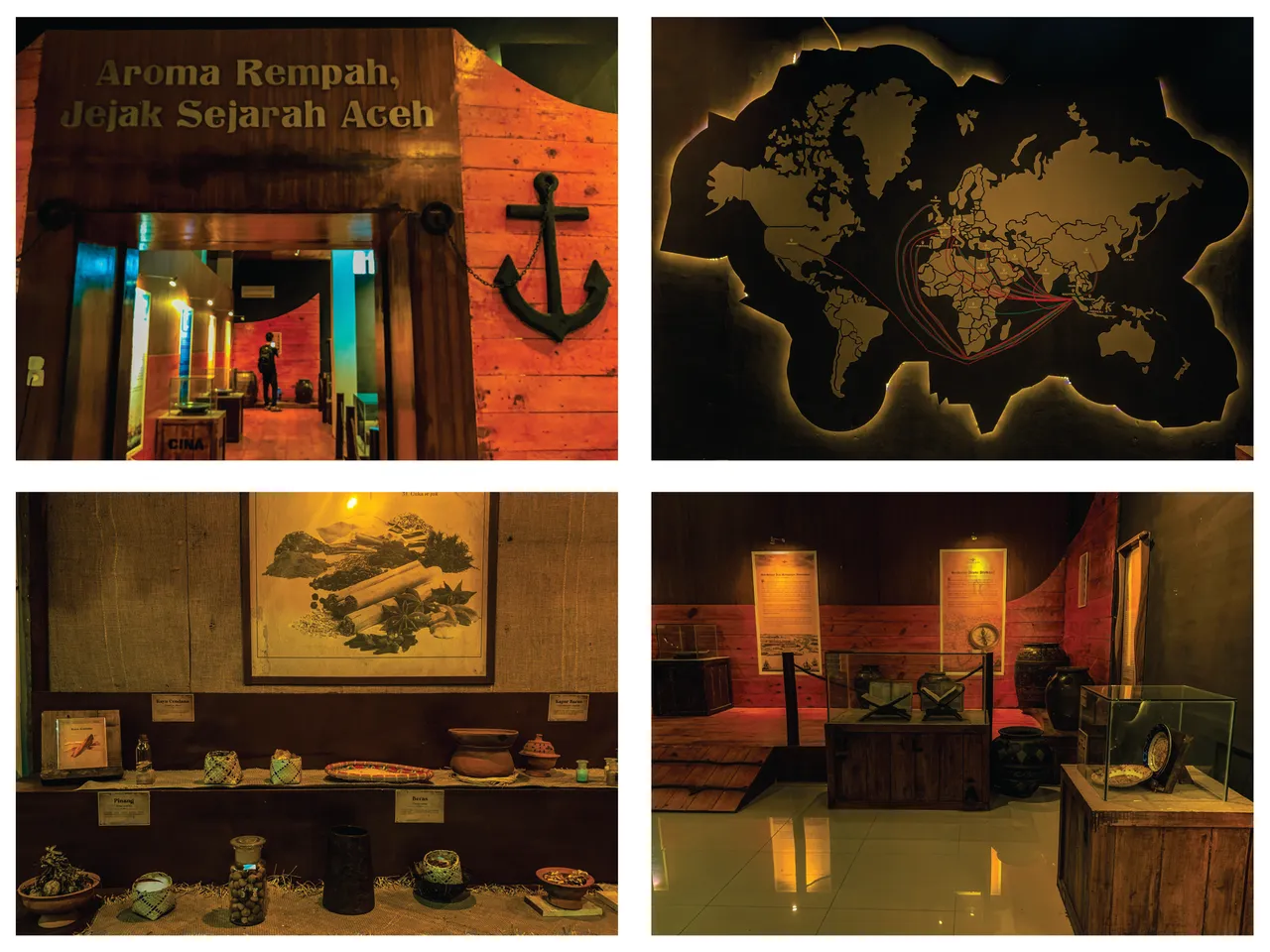
Our first stop on the tour was the spices and herbs showcase. This section featured a variety of exhibits that showcased the history and significance of spices in Aceh. We learned about the different types of spices that were grown and harvested in the region, such as nutmeg, mace, and cloves, and how they were used in traditional Acehnese cuisine. There is also a map that showcased the trade routes of spices in the past. The map identified 20 countries that were the main destination of Aceh's spices trade. It was fascinating to see how the trade of these spices had shaped the history and culture of the Acehnese people.


Not only displayed raw spices but also featured a variety of processed spices, particularly oils. I was able to see different types of processed oil commodities, such as those made from extracts of cloves, patchouli, sandalwood, and pliek u (Acehnese oil, extracted from fermented coconut meat). The information provided about these oils included their uses and benefits. It demonstrated how these oils were traditionally utilized in Aceh, for example in cooking, traditional medicine, and perfumery. It also provided insight into the unique properties and characteristics of each oil, and how it was valued in the past.
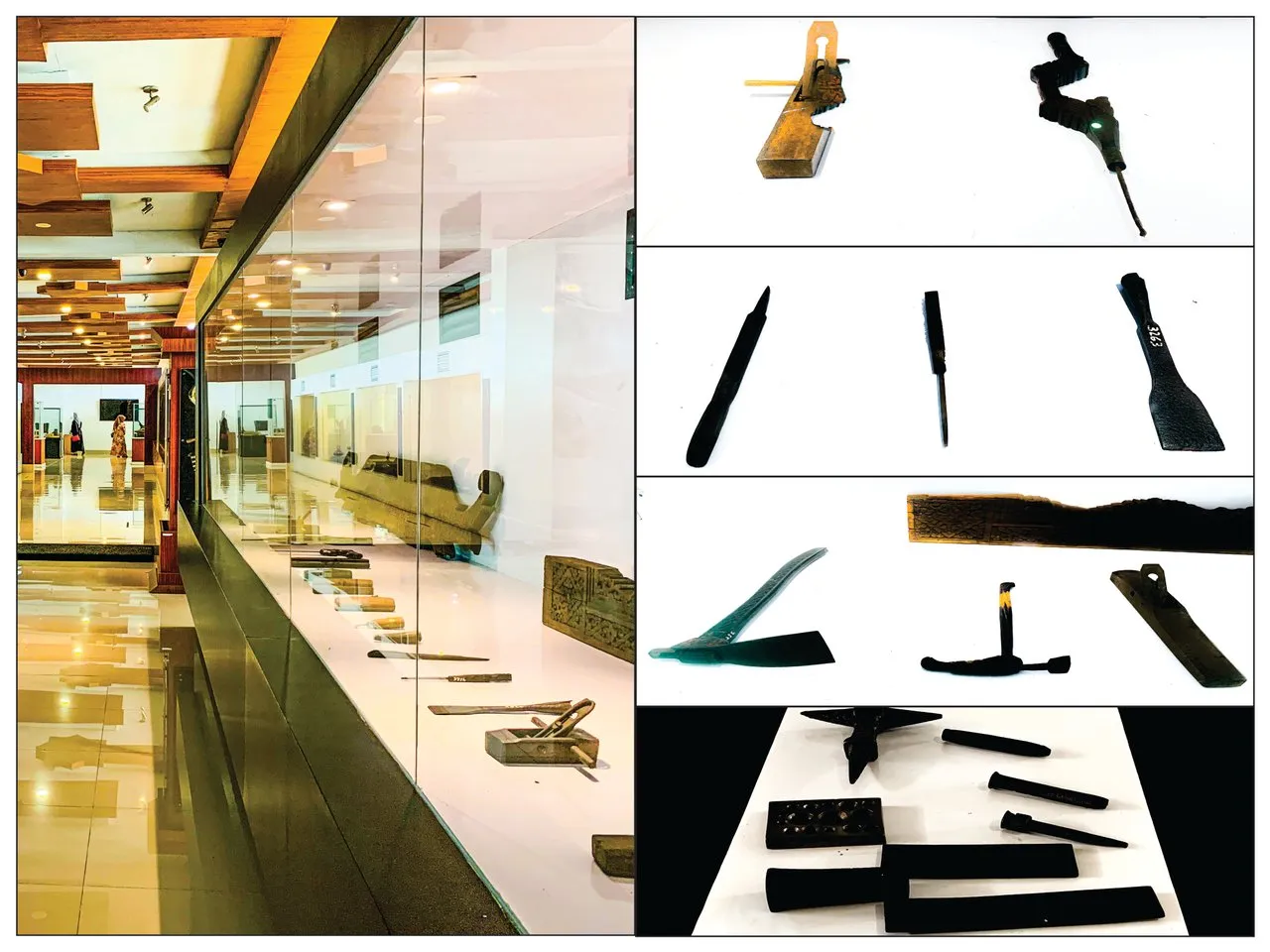
The next stop was the tools showcase. the tools section. This section was located right after the spices and herbs showcase, and it featured a wide variety of traditional tools used by the Acehnese people. The tools on display included those used for farming, fishing, hunting, and other traditional activities. The section had a wide range of tools, such as sickles, hoes, knives, and fishing nets, which were used in daily activities by the Acehnese people. The section also had a variety of traditional equipment and machines that were used in the processing of spices and other commodities. The section was well-curated and well-labeled, providing an informative and educational experience. It was interesting to see how these tools were used in the past, and how they were an integral part of the Acehnese culture.

It was a great addition to the spices section and gave a more comprehensive understanding of the tools and technology that were used in Aceh in the past. However, I didn't get a lot of pictures as most of the tools are displayed inside a glass case, so I didn't get the proper position or composition to take pictures. It was a great addition to the spices section and gave a more comprehensive understanding of the tools and technology that were used in Aceh in the past.

I was particularly interested in the information provided about the traditional rules and regulations surrounding fishing in Aceh. These customs have been in place for centuries, and are still upheld today. One of these rules prohibits fishing during certain times, such as on Fridays (in observance of the Muslim Friday prayer service), Islamic holidays, and the commemoration of the tsunami that occurred on December 26, 2004. This prohibition is beneficial for conservation efforts, as it allows marine resources to recover and replenish during these designated times. The explanations provided about these traditional customs gave me a deeper understanding of the cultural significance and conservation efforts surrounding fishing in Aceh.
This rule is governed by a traditional institution known as Panglima Laot, which is headed by a chairman who holds the title of Panglima Laot (Sea Commander). Fishermen who fail to abide by this rule may face sanctions, which can vary depending on the region. However, these sanctions are generally not too severe and may include tasks such as cleaning the mosque yard or providing construction materials, as agreed upon by the authorities and the violator. This institution plays an important role in maintaining the tradition of fishing and preserving the marine resources in Aceh. Furthermore, these customary institutions are even recognized by both the local and central governments.


Acehnese wedding attire is known for its vibrant colors and intricate designs. The clothing is often made from traditional fabrics such as songket, which is a hand-woven silk or cotton cloth that is richly patterned with gold or silver thread. It's worth noting that each district in Aceh has its unique style and variations on the traditional wedding attire, adding to the cultural richness of the region.

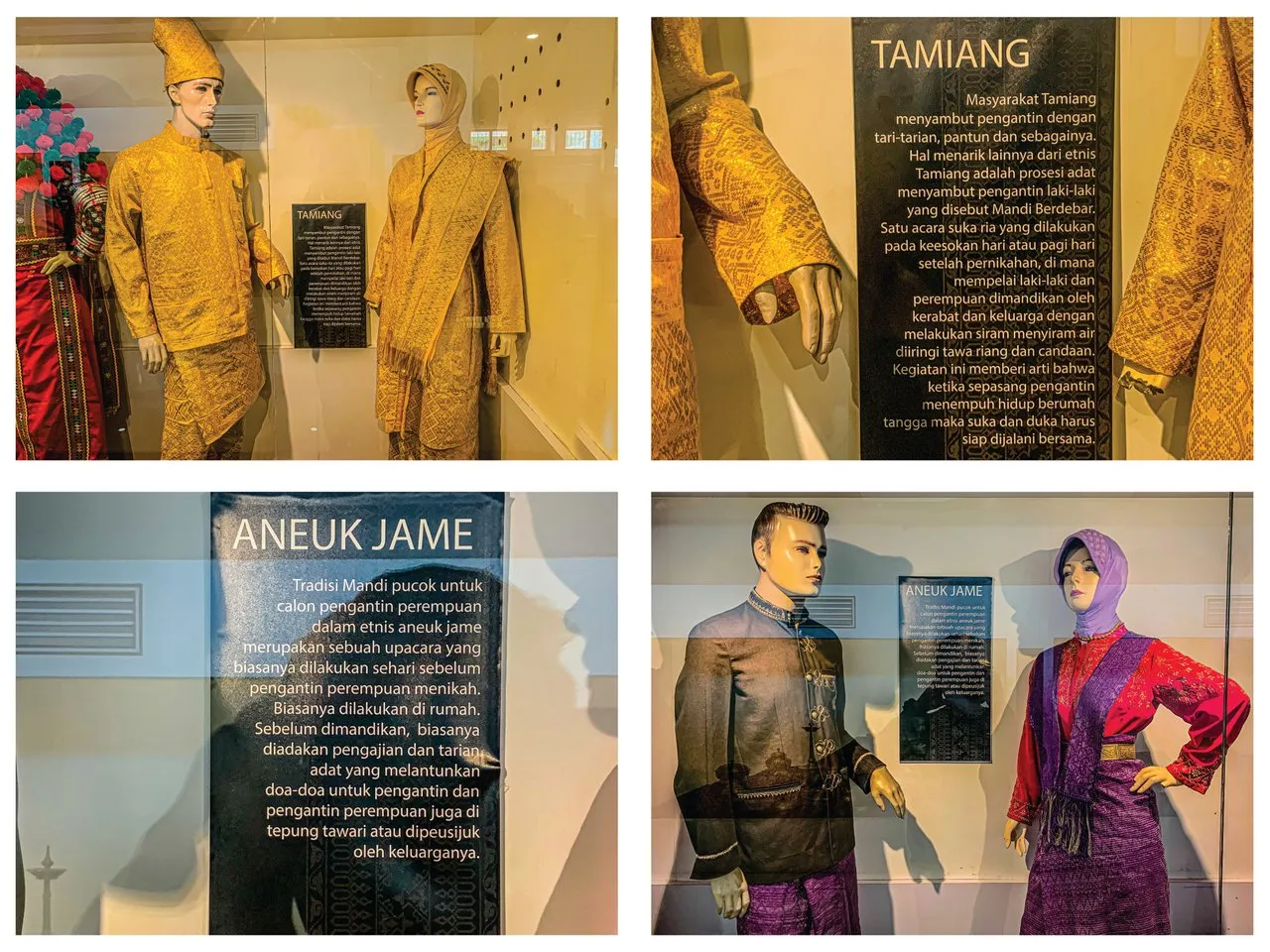

One of my favorite traditional wedding attire from Aceh is the Aceh Gayo wedding clothes. It is known for its intricate tribal motifs and vibrant colors. The motifs used in the Aceh Gayo wedding attire are heavily influenced by tribal designs and patterns, making it unique and distinct from the other traditional wedding attire in Aceh. The use of bright and bold colors also adds to the overall aesthetic of the attire, making it stand out.
In addition to traditional clothing, the wedding attire also includes a variety of accessories and jewelry. The jewelry is typically made from gold and silver and comes in many variations, including necklaces, rings, earrings, bracelets, and more. These pieces are often intricately designed and feature unique carvings and patterns that are traditional to the Acehnese culture.


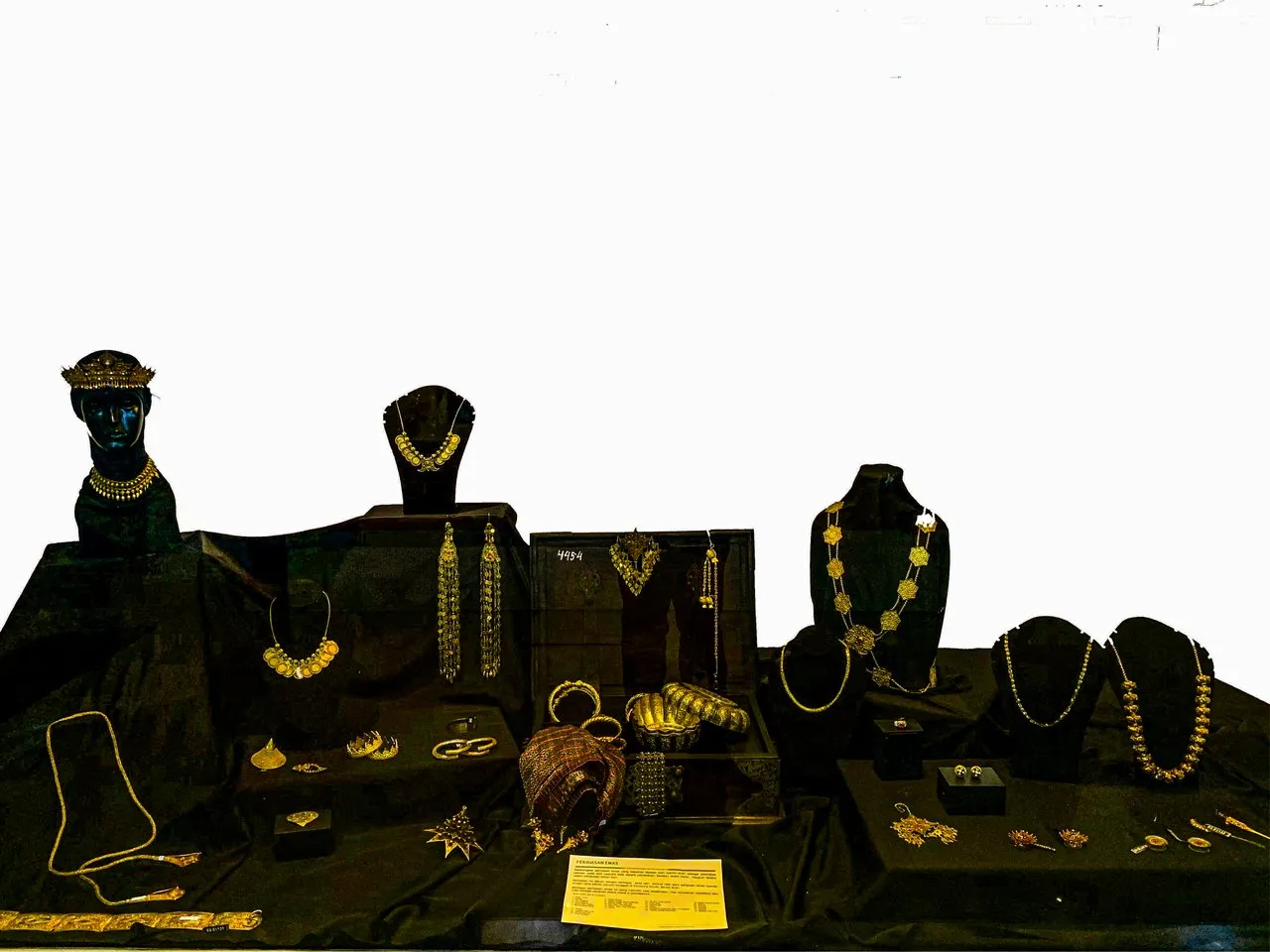

One of the most notable accessories of the Acehnese wedding attire is the Kupiah Meukeutop which is a traditional headscarf that is worn by men. It is made from a fine, sheer fabric and is typically adorned with intricate embroidery and beadwork. Another traditional accessory that is commonly used during weddings is the Acehnese umbrella, which is a beautifully decorated parasol that is carried by the bride or groom. These accessories, along with the traditional clothing and jewelry, all come together to create a stunning and unique visual display that showcases the rich cultural heritage of the Aceh
One of the highlights of the Aceh Museum is the section dedicated to showcasing the heroic figures of Aceh. This section features 12 figures, both men and women, who have made significant contributions to the history and culture of Aceh.






Some of the figures include Cut Nyak Dien, commonly referred to as the Aceh War Queen; Keumalahayati, commonly referred to as the World's First Female Admiral; Teuku Umar, commonly referred to as the War Tactician; and Tengku Muhammad Daud Beureuh, commonly referred to as the Aceh's Religious Leaders and Figures. In Indonesia, it is a common practice to honor heroes by naming streets after them, ensuring that their legacy and contributions will be remembered and honored for generations to come. I am not certain if this tradition is practiced in other countries. Please kindly let me know about this.
Another notable feature of the Aceh Museum is the historical timeline showcase, which provides a comprehensive overview of the major phases in Aceh's history. The timeline is divided into four main phases: the first phase (1511 - 1629) covers the period of the Aceh Kingdom, the second phase (1706-1942) covers the period of colonialism, the third phase (1945 - 1965) covers the beginning of Indonesian independence and the outbreak of conflict between Aceh and Indonesia, and the fourth phase (1965 - 2005) covers the reform era.
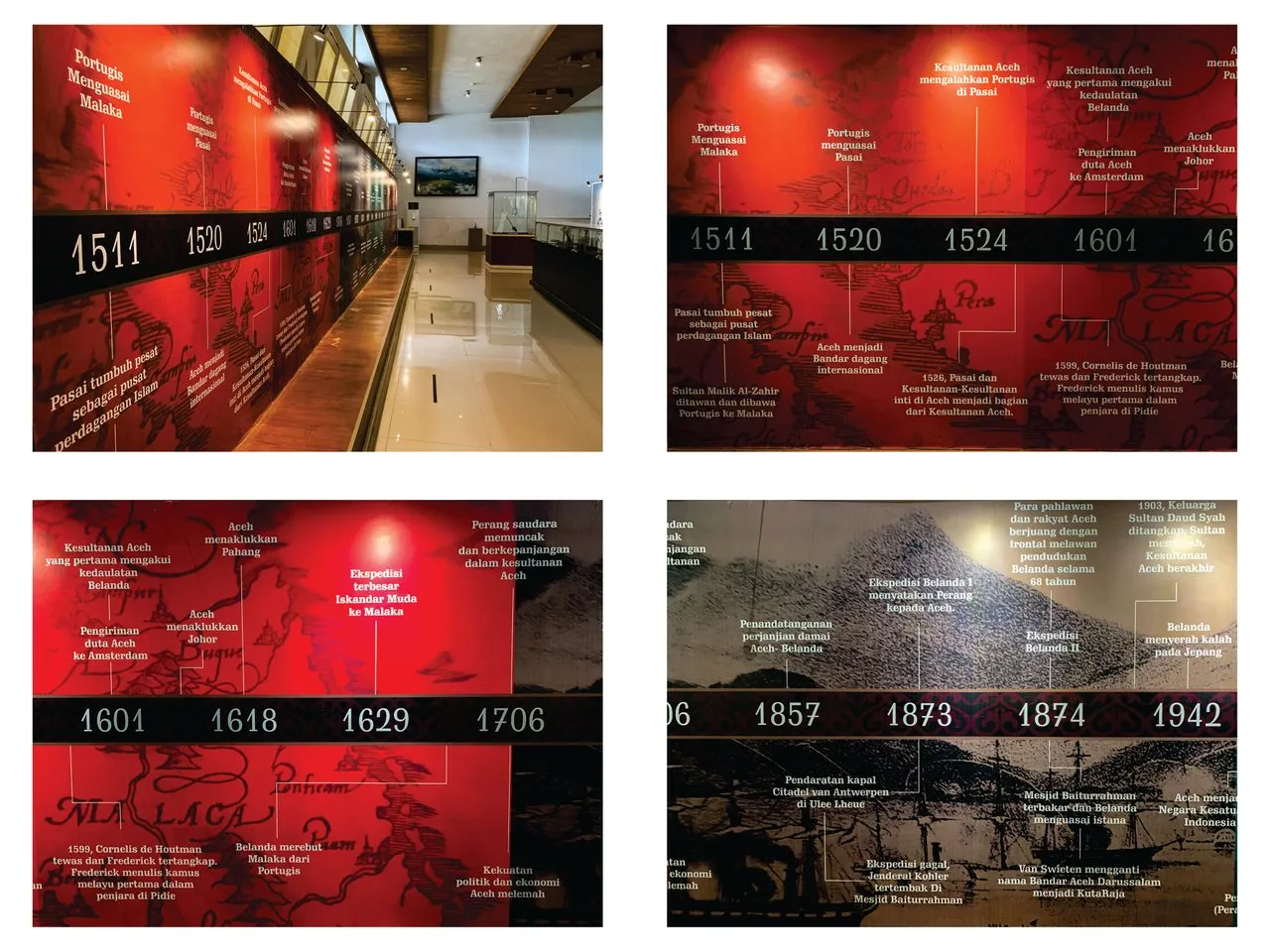

This period includes significant events such as the declaration of the Free Aceh Movement (GAM), the signing of the Helsinki Memorandum of Understanding, and the devastating Aceh Tsunami. The timeline showcase provides a clear and detailed understanding of Aceh's history and the events that have shaped the region over time. It is important to note that the historical events represented in the timeline may not be entirely accurate and that different perspectives can be found on the subject.
In conclusion, my visit to the Aceh Museum was an incredibly enriching experience. I was amazed by the wealth of knowledge and artifacts on display, providing me a comprehensive understanding of the history, culture, and traditions of the Acehnese people. From the traditional clothing and jewelry, to the showcasing of heroic figures, the historical timeline, and the exhibition of Aceh's commodities, I was able to gain a deeper appreciation for the richness of Aceh's heritage. I am so grateful for the opportunity to learn so much about Aceh's history and culture and I would highly recommend a visit to the Aceh Museum to anyone interested in gaining a deeper understanding of this fascinating region. Overall, I left the Museum with a lot of knowledge and a newfound appreciation for the culture and heritage of the Aceh people. See you in the next post everyone!
and processed through Adobe Lightroom
